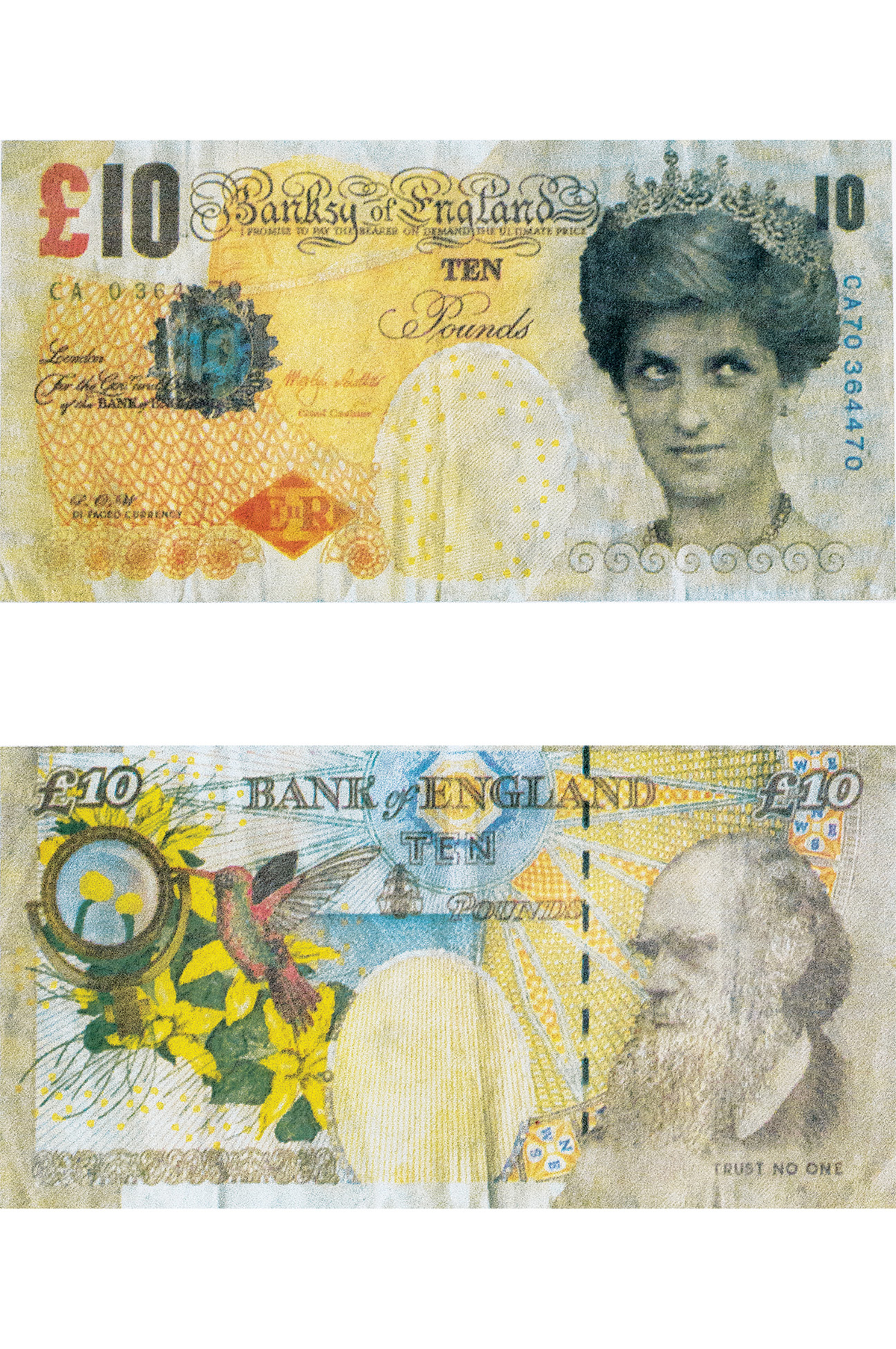While the details of Banksy’s identity are elusive, the same can’t be said of his politics. The artist remains Britain’s poster child of back talk. “You know what hip-hop has done with the [n-word],” Banksy told The Guardian in 2003. “I’m trying to do that with the word vandalism, bring it back.”
Most versions of Banksy’s history place his childhood in Bristol in the 1970s, when youth culture ran rampant and the coastal city teemed with parties and graffiti. “Graffiti was the thing we all loved at school,” he has explained. “We all did it on the bus on the way home from school. Everyone was doing it.”
Banksy was 10 when he met 3D, a member of the musical group Massive Attack who’d been to New York. The pair pored over posters, flyers, and other paraphernalia from the East Coast. In 1989, with the citywide anti-graffiti crackdown known as Operation Anderson, the atmosphere in Bristol dampened. Banksy moved to something faster—stenciling—which reduced the risk of capture by the cops.
The anti-globalization movement started around the same time, and by 2001 the world was discussing child labor, warmongering, banking, and corporations. And what of Palestine, which Banksy called “the world’s largest open air prison”? In Jerusalem in 2003, his Love Is in the Air (Flower Thrower)—a stencil of a masked man tossing flowers as if they were a bomb—made history.
Since then, we’ve heard of his friendship with Damien Hirst, his museum shows, his visit to Disneyland, his spoof £10 notes, his 2013 sale in New York, and his portrait of Steve Jobs in the Calais Jungle, a French migrant encampment.
Now that his home country is in turmoil, with a disgraced Boris Johnson on the way out, Banksy has still more ammunition in his belt. An interesting mural cropped up in Oxford last month. On the walls of the dilapidated Conservative Club, the P.M. appears behind bars, with Outlaw Johnson marked in black writing.
The new book Banksy celebrates the elusive artist and his legacy. More than 100 pages trace his life and milestones. —Elena Clavarino

Elena Clavarino is an Associate Editor for Air Mail






